


SEO vol. 2 – How to Optimize Your Website in the Age of AI-Powered Search
The days when it was enough to land on Google’s first page are over. Search is evolving fast. More and more users are satisfied with AI-generated answers (like Google AI Overviews, Perplexity, or ChatGPT) — and they may never even visit your website.
The days when it was enough to land on Google’s first page are over. Search is evolving fast. More and more users are satisfied with AI-generated answers (like Google AI Overviews, Perplexity, or ChatGPT) — and they may never even visit your website.
Great content is no longer enough. Today, you need to create content that AI can both find and use in its responses. The SEO community initially reacted to AI search with fear. But over time, it’s becoming clear that these changes open the door to innovation — and a kind of “back to basics” approach that favors experimentation. That means a unique opportunity to get ahead of the competition.
In this article, we’ll break down the key principles behind this new mindset. And since a major German insurance company recently approached us for an AI-focused SEO strategy, we’ll also share some real-life examples from practice.
💡 AI search optimization is a must for any business that wants to stay visible. Those who start now will gain a massive competitive edge.
Let’s start with a stat. According to research, the average click-through rate (CTR) for informational queries dropped by 34.5% when AI Overviews were shown. Similarweb reported that from the launch of Google AI Overviews in May 2024 to May 2025, the share of so-called zero-click searches increased by 13 percentage points — from 56% to 69%.
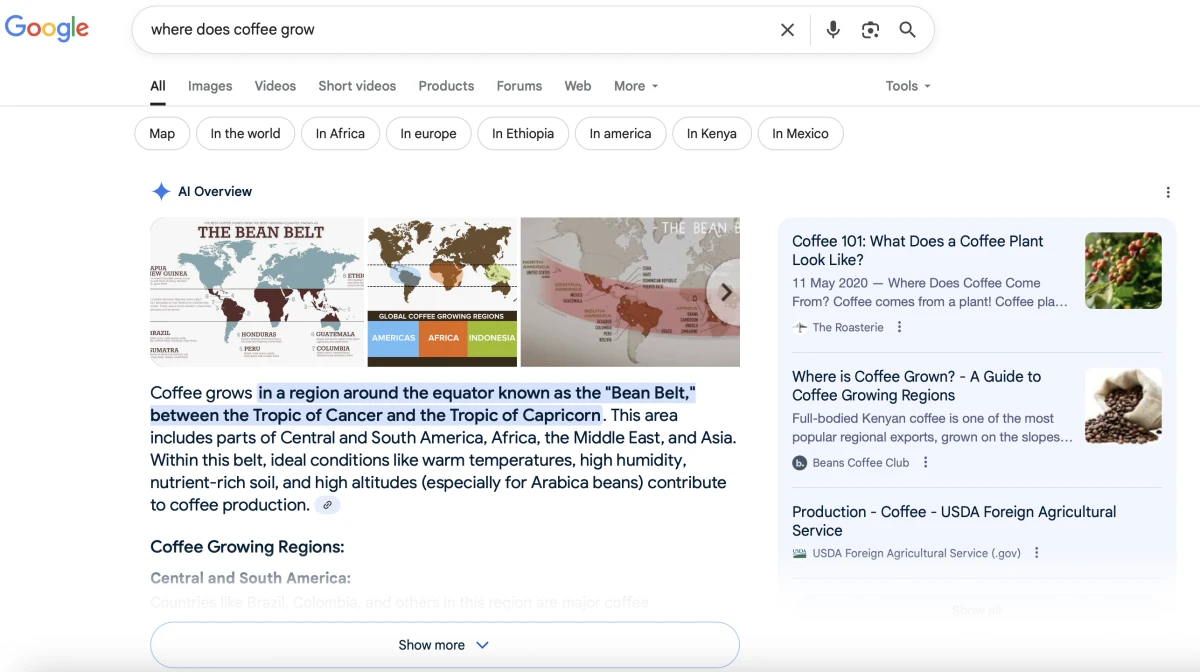
What is AI search?
💡 AI search is an advanced way of finding information that uses machine learning and natural language models to understand the context of a query. It delivers more relevant, personalized, and comprehensive answers than traditional search engines.
How AI Finds Answers – and Why Traditional SEO Is No Longer Enough
When you enter a query into Google today — especially with the SGE (Search Generative Experience), ChatGPT, or Perplexity — you’re no longer just getting traditional search results. You’re shown an AI-generated answer: a summary of relevant information built by an AI model based on its understanding of the topic — not on exact keyword matches. And that completely changes the rules of the game.
💡 In the world of AI search, we’re not just optimizing for keywords anymore. We’re designing content that can be used across hundreds of possible queries. This approach is called Relevance Engineering.
1. Traditional SEO vs. AI Search
In the past, search engines focused on keywords. Algorithms matched search queries with website texts and ranked the best matches. Today, thanks to large language models (LLMs), it’s all about meaning. AI interprets a query as a user’s intent — not as a literal string of words. It looks for context, not exact matches.
Take these three queries:
“Best coffee machine for an office”
“Compare DeLonghi vs. Tchibo”
“Affordable coffee machine for company under €200”
AI interprets all of them as different ways of expressing the same need: to find a suitable coffee machine for the workplace. If your content meaningfully addresses that need — even if it doesn’t include any of those phrases word-for-word — AI can still use it to generate an answer.
2. Embeddings: How AI “Understands” Text
At the core of this understanding are embeddings — vector-based (numerical) representations of meaning. Instead of literal words like “office” or “coffee machine,” AI uses these vectors to measure how semantically close two texts are.
That means AI can recognize that:
“Affordable espresso maker” is close in meaning to “coffee machine under €200”
“Business supplies” relate to “office equipment”
“Brand comparison” is part of a purchase decision
So AI selects snippets not based on keyword repetition, but on context and relevance.
3. Query Fan-Out: How AI Searches for Content
Some systems — like Google SGE — use a method called query fan-out. That means the AI generates dozens of alternative versions of the original question to better capture what the user might be looking for.
For example, from the query “cheap coffee machine for the office,” AI might generate:
“Office espresso machine under €200”
“What’s best for coffee in an open office?”
“Capsule vs. manual machines — which one for business use?”
4. Selecting Relevant Content
Next, the AI scans available content (websites, articles, reviews, product descriptions) and picks out the most relevant snippets to build its answer. The clearer and more precise your content is, the more likely it is to be selected as a source.
5. How AI Understands Concepts: The Knowledge Graph
Google and some AI systems also use a knowledge graph — a network of connected concepts, brands, locations, people, and topics.
For every word or phrase, AI builds context:
“Apple” might refer to a tech company or a fruit
“Jaguar” could be an animal or a car brand
To make sense of this, AI relies on the knowledge graph. For example, it “knows” that Apple is a brand that sells iPhones, is headquartered in the U.S., and has a CEO named Tim Cook — so it understands which Apple you mean.
If your website uses structured data (more on that below), clear terminology, and well-defined context, you’re helping AI place your brand correctly into this graph.
In our opportunity analysis, we focused primarily on visibility in AI-powered search — but traditional SEO is still essential. Comparing the client’s performance to competitors using classic organic search metrics helped us evaluate the overall quality of their website content.
Visibility in the traditional SERP still plays a significant role — at least in this early stage of AI search development — and often correlates with how well a website performs in AI-generated answers.
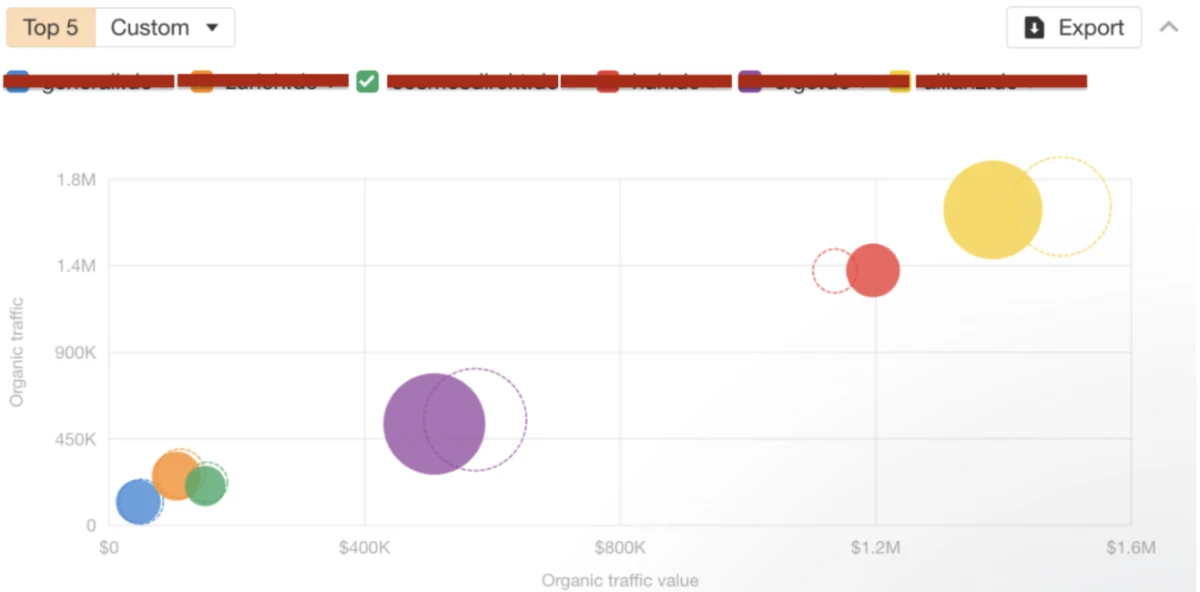
How to Create Content for AI Search
AI doesn’t look for the biggest brand, the most famous domain, or the article with the most backlinks. It looks for the bestcontent — the one that answers the question most effectively. In AI search, you can succeed even without a big budget — if you meet the following criteria:
You explain the topic clearly and practically
You use plain language and a clear structure
You cover the topic in depth and from multiple angles
This opens the door for smaller players with high-quality content. You don’t need to rank first in traditional search results. What matters is being first for the AI.
The best way to understand how AI evaluates your website is to ask the AI tools themselves. That’s why we include their feedback directly in our strategies.
It may sound simple, but this method makes collecting initial insights much easier.
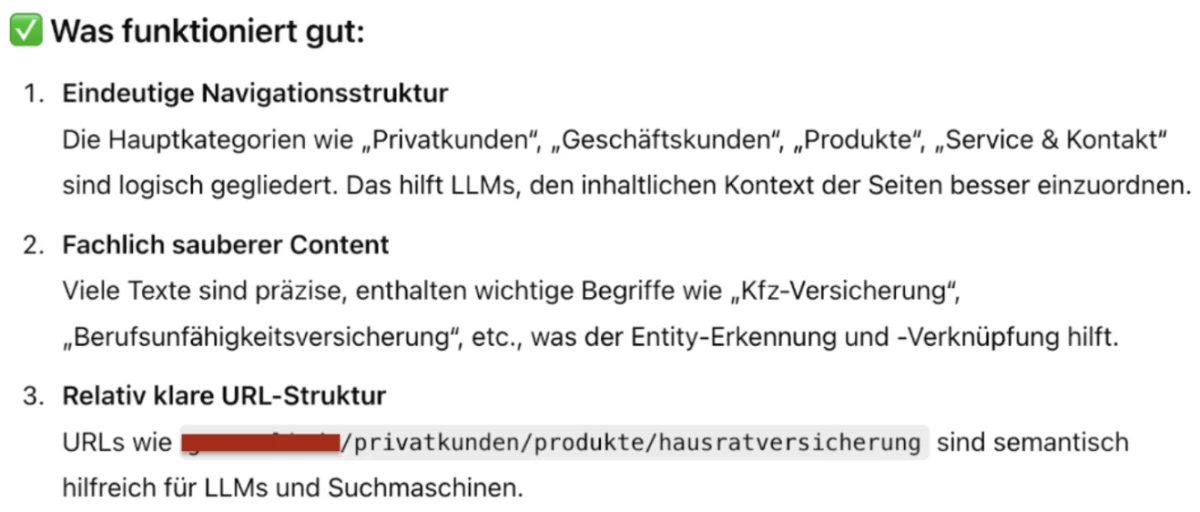
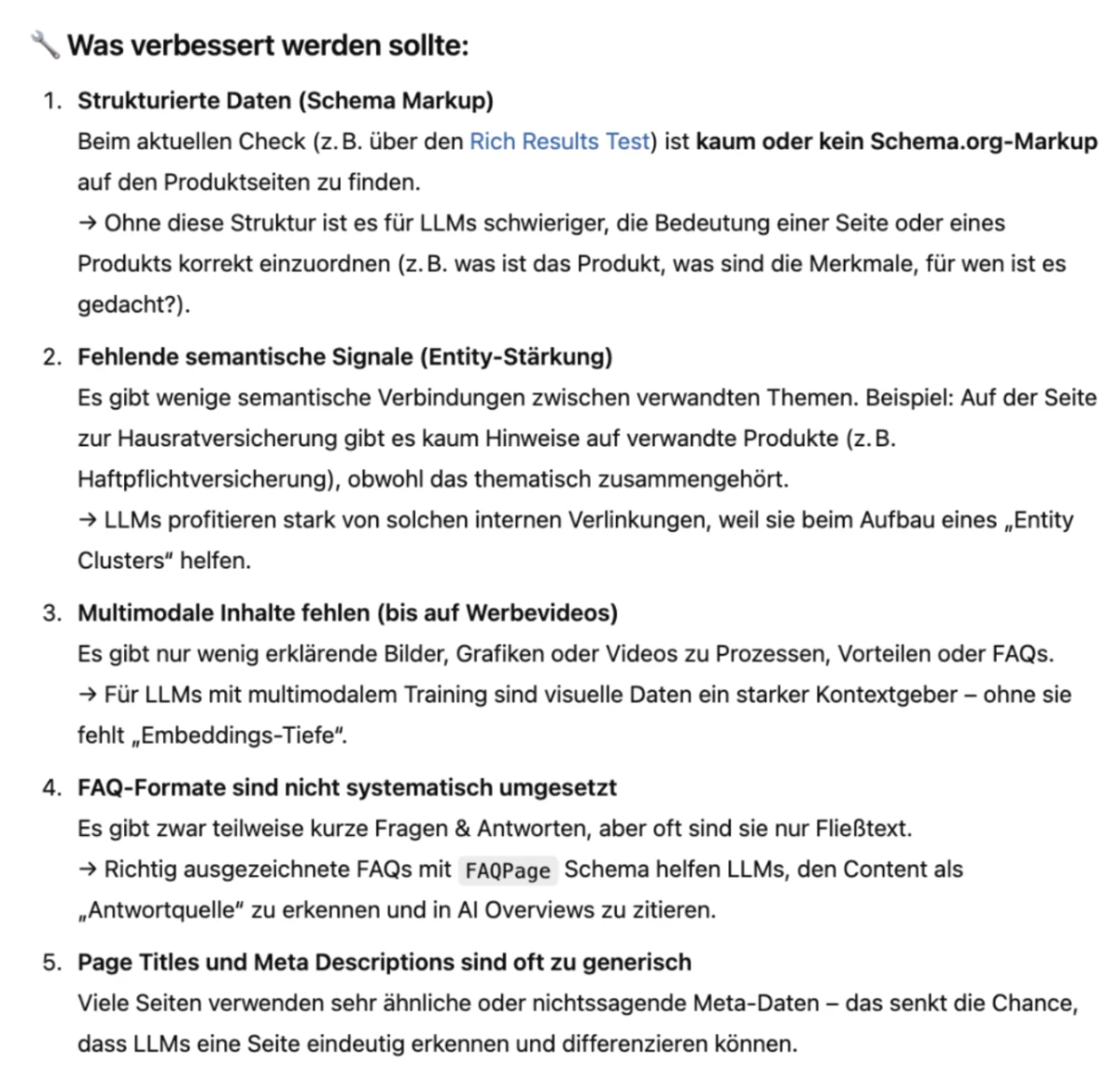
1. Be Specific and Use Clear Language
Language models prefer content that directly answers the question. As we’ve mentioned, they work with meaning. If you use vague terms like “new arrival” or “this product,” AI won’t understand what you’re referring to.
Instead of ❌ “a new product for the home”, write ✅ “Dyson V12 cordless stick vacuum for apartments up to 80 m².”
This ensures what's called monosemanticity — every term has one clear meaning. That helps AI better understand and use your content.
2. Show That You’re an Expert in Your Field
AI agents trust websites that cover a topic thoroughly. They value what's known as topical authority.
Here’s what that means in practice:
✅ Create content series and clusters of related pages
✅ Explain the origin of the product, its health benefits, and how it’s made
✅ Interlink your content clearly and meaningfully
Even in the age of AI, the E-E-A-T principles (Experience, Expertise, Authoritativeness, Trustworthiness) matter more than ever. Content that reflects real-world expertise and credibility — either from an author or a brand — is more likely to perform well not only in search results, but with users too.
Google uses E-E-A-T to assess content quality. And in the context of AI-generated results, it's especially important to demonstrate human expertise and trusted sources — through author commentary, citations, or context.
✅ Add a short author note at the end of the article that states who wrote the piece or who stands behind it professionally. Mention relevant experience, areas of specialization, or hands-on practice.
✅ Link to high-quality external sources (such as research papers, official guidelines, or expert blogs) or your own internal materials. This boosts credibility and signals that the information is grounded.
✅ Include real-life examples, personal insights, expert warnings, or specific recommendations in your content.
3. Use Clear and Logical Structure
AI prefers content that’s easy to follow and well-organized:
✅ Clear headings (H2, H3)
✅ Bullet points and lists
✅ Questions and answers
✅ A summary at the beginning
✅ FAQ-style sections
This kind of structure makes it easier for AI agents to understand and work with your content.
4. Think About the Customer Journey
As mentioned earlier, AI doesn’t just respond to the exact wording of a question — it generates multiple variations of it. Your content should reflect different angles and ways of thinking that users might have.
Recommendation:
✅ Track query journeys — how people search and explore a topic step by step. Create content that flows logically, builds on previous questions, and covers different perspectives on the topic.
As part of the client strategy, we created a structured roadmap based on key segments we recommend optimizing step by step.
In addition to a detailed mapping of the full customer journey, we also focus on content tailored to younger target groups — especially those more likely to adopt AI tools early.
For each segment, we’re building an interconnected network of related, highly relevant topics. It’s equally important to optimize existing content.
1️⃣ Car liability insurance
➕ Content for new drivers
2️⃣ Home and personal liability insurance
➕ First-time housing, co-living, shared apartments
3️⃣ Accident and leisure insurance
➕ Sports-related injuries, (low-cost) travel
4️⃣ Legal protection insurance
➕ Practical topics like online shopping, first employment contracts
5️⃣ Disability and pension insurance
➕ Special offers and educational content for younger audiences
5. Incorporate Multimedia Content
AI doesn’t just process text — it also works with images, videos, and graphics. ✅ If you enrich your content with the right attributes (like alt text, captions, and structured data), you increase the chances that your website will be referenced by AI models.
6. Make Your Content Easy to Crawl
AI models (for now) operate on simpler crawling principles than Google — they can’t navigate websites as intelligently as Google bots do.
That’s why technical SEO best practices are more important than ever in the age of AI. Your site should:
✅ Load quickly
✅ Render content without complications
✅ Use structured data
If an AI crawler can’t access your content, all your efforts — great copy, structure — will go to waste.
Optimize for the “least capable” bot. Expect a wide range of agents to be crawling the web, and not all of them will be as sophisticated as Googlebot.
So when optimizing your website, make sure that even less advanced crawlers (like AI models) can extract all the key information.
✅ Ensure that important content loads in HTML, not only dynamically via JavaScript
✅ Optimize your Core Web Vitals
As part of our opportunity analysis, we also pay close attention to traditional metrics like Core Web Vitals.
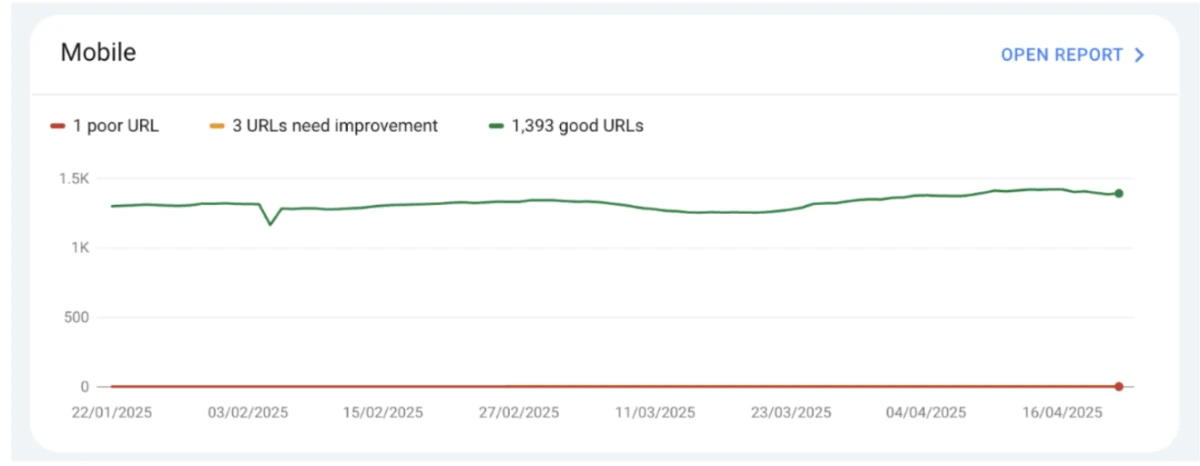
7. Implement Structured Data
Structured data helps both AI tools and search engines understand what different parts of your website represent — whether it’s a product, a review, an organization, or an article. In blog posts, for example, structured data can clearly identify your FAQ section.
Using the schema.org standard turns your website into a more readable and reliable data source — one that AI models can draw on when generating answers. ✅
8. Build a Strong Brand Reputation
AI doesn’t just look at how many times your brand is mentioned, it cares where, how, and in what context you’re mentioned. Natural mentions on trusted platforms — like reviews, industry blogs, discussion forums, or community websites — matter most.
These signals help AI understand that your brand is real, reputable, and relevant to the topic.
It’s not about quantity — it’s about quality and context.
✅ A strong reputation within your niche or community carries far more weight than hundreds of low-quality, artificially created mentions.
As part of the strategy, we included a classic link intersect analysis — identifying websites that link to competing brands but haven’t yet mentioned our client.Since AI tools often rely on review-based content, we also analyzed the most frequently cited sources within the relevant segments.
Our goal is to ensure the client appears in these key articles on the German market. This significantly boosts both the brand’s credibility and its chances of being featured in AI-generated answers. In this way, SEO and GEO are closely aligned with the client’s PR activities.
Brand Strength in the Age of AI Search
The less stable and predictable the answers from Google or LLMs become, the more important your brand becomes. If users remember you (or if your site ends up in their search history) you’re already halfway there. You’re that much closer to being recommended by AI.
That’s why you can’t afford to be interchangeable. You need a distinct tone of voice and genuine USPs. It could be outstanding, helpful content, top-tier customer service, or an exceptional product or experience that makes you stand out from the competition.
How to Measure Your Website’s Performance in AI Search
Ranking position no longer tells the whole story. AI-generated search results are:
Dynamic – answers can change from minute to minute
Personalized – depending on who’s searching and what they’ve searched before
Unpredictable – often shown as direct answers rather than clickable links
That’s why, instead of traditional metrics like “keyword ranking,” it makes more sense to track:
Appearances of your content in AI answers (e.g. in Google’s AI Overviews)
Clicks from those answers (soon to be available in Google Search Console under the “AI Mode” section)
Mentions of your brand in tools like ChatGPT, Perplexity, or Claude (as product cards or even without a direct link)
Search is also becoming increasingly fragmented. There are now multiple parallel channels where people search — Google SGE, Bing Chat, ChatGPT, Perplexity, and others — so brands must track their visibility across platforms, not just in the traditional SERP.
It’s important to start shifting focus now, because classic SEO metrics are slowly being replaced by a new kind of visibility: How much space your brand occupies in AI-powered search results. Being in first position no longer guarantees traffic — that’s the reality of zero-click search.
Take the Data with a Grain of Salt
When it comes to measuring performance in AI search, we’re still largely limited by what the platforms themselves — Google, OpenAI, Microsoft, and others — allow us to track. Visibility tracking in the AI landscape is still in its early days, and available data will gradually increase over time.
For now, you can monitor tools like Ahrefs, which are beginning to incorporate AI visibility signals into their tracking.
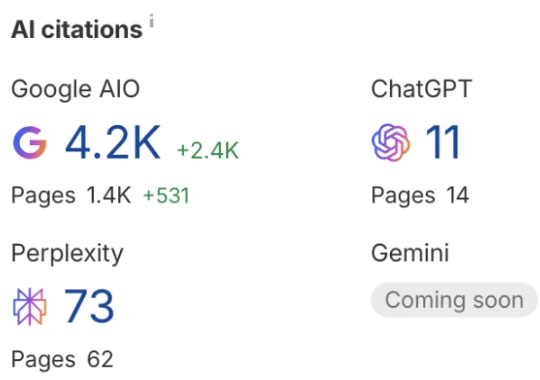
Note: Data from ChatGPT or AI Overviews in Ahrefs Are Only Estimates
Don’t take visibility metrics in ChatGPT or AI Overviews from tools like Ahrefs at face value, they’re just approximations. However, they can serve as a litmus test and provide valuable benchmarking when comparing your own performance with competitors.
If Ahrefs shows that a competing brand is performing three times better in AI Overviews, it’s likely they’re three times more advanced in AI optimization, too.
Make the Most of AI Search
In AI search, the goal isn’t to rank first — it’s to be among the sources AI cites.
That requires a new mindset:
Think in terms of context, not just keywords
Write in a clear, simple, and structured way
Build topical authority and strong internal linking across your content
SEO Isn’t Dying — It’s Evolving
And finally: The most important principles of good old SEO still apply (as even Google confirms).
Focus on the quality of your product
Build a strong brand reputation
Create content that’s genuinely helpful for your audience
That hasn’t changed — not even in the AI era.
💡 Want to make sure AI tools can find and use your content? Get in touch with us. We’ll assess how your brand performs in the AI search landscape, help you with a technical audit, and define a content strategy built for the age of AI.
Sources
From It Depends to Action: Rethinking SEO in the Age of AI
iPullRank – Relevance Engineering
Search Engine Land – What to Do When AI Overviews Take the Spotlight
Aleyda Solis – AI Search Optimization Checklist
iLoveSEO – A Guide to Semantics
Search Engine Journal – AI Mode & Google Search Console

How we can help you
Our team will help you with the first steps of your expansion as well as long-term marketing strategies.
